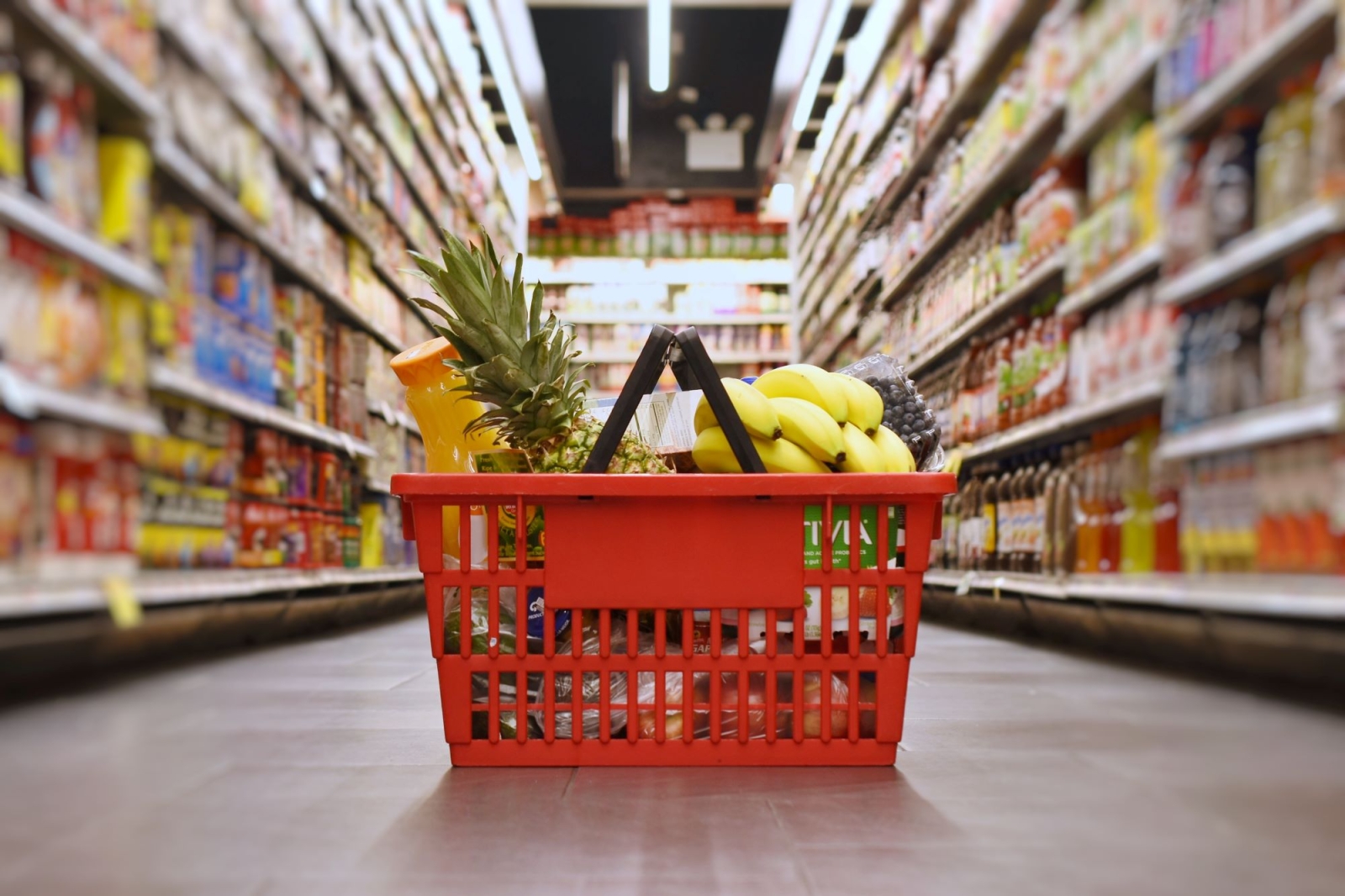The current system of food production and consumption is threatening life on our planet. It is a major cause of global biodiversity loss, climate change and poverty. From an economic perspective, these damages are costs, but they are not (yet) included in the price we pay for our food. Costs not paid today are passed on to future generations. This is not a future-proof situation, but initiatives that reflect the true cost of our food are spreading.
Discounted prices and hidden costs
More than three billion people cannot afford a healthy diet because of high food prices. At the same time, the hidden costs of food are more than double what they are today. To achieve food security for current and future generations, a fundamental problem must be addressed: current prices do not take into account the true value of our food.
What is the true price of a product, including all its environmental and social costs? What if the selling price of food, a garment, or an electronic device included the costs of the impacts of the production stages such as air and water pollution or the emission of greenhouse gases as well as those produced during the use stage – the impacts, for example, on health such as obesity or cardiovascular disease? If these external factors are not considered in costing, however, it is crucial to realize that excluding these costs from the prices of goods presents consumers, governments, and businesses with distorted information about the world, nature, and the economy.
The situation is also exacerbated by constant discounted prices in supermarkets that have made "the perception of the fair value of a food product fade away." (Ciconte F., Liberti S., Il grande carrello. Chi decide cosa mangiamo, Editori Laterza) This is a faulty perception, an illusion among ourselves and towards future generations that some recent projects and research are trying to put an end to.
One solution may be the True Price proposed by the Amsterdam-based Impact Institute, which sees the implementation of "true pricing" as the key to a sustainable transition to regeneration. True pricing includes environmental and social costs and the right to food and health access. With this approach, healthy and sustainable foods could be made more affordable and unsustainable and unhealthy foods more expensive. This could ensure that healthy and sustainable food becomes profitable for businesses and affordable for people.
The first supermarket with “real prices”
"Welcome to the world's first supermarket with real prices," states from 2020 De Aanzet, a grocery store in central Amsterdam. Two types of prices for different foods are posted inside. The "normal" price of tomatoes is 3.75 euros per kilo, while the "real" price is 3.97 euros. The 0.22 euro difference represents the hidden costs of growing and transporting tomatoes, in terms of CO2 emissions, underpaid workers, water and land use. De Aanzet is not the only Dutch supermarket to present customers with real prices alongside regular prices. In May 2022, Biowinkelvereniging, a Dutch association for organic retailing, launched tests in seven other supermarkets in the Netherlands.
Working with several manufacturing companies, True Price calculates the actual prices of various goods. The comparative pricing system gives customers some information and a choice. The same food can have very different normal and true prices: if one brand of apples has a real price gap of 5 cents and another has a gap of 30 cents, this implies that the first apple comes from a more environmentally and socially responsible producer. The two founders Michel Scholte and Adrian de Groot Ruiz, who met when they were still students, launched True Price in 2012, with the goal of providing companies and consumers with a clear sense of how much products really cost as a starting point for then changing the way they spend, sell, and produce.
As Scholte states, "First, we assess the entire supply chain of a product. Then we identify any human rights, sustainability and labor violations within the supply chain, and finally, we calculate the cost to remedy these violations, adding up the activities to restore, compensate, prevent and possibly fine the violations." The calculation involves environmental and social parameters: climate change, water use, land use, air pollution, water pollution, use of scarce materials, child labor and poverty.
The application of true pricing to food products allows for the collection of premiums that the Impact Institute and True Price – of which the former is a spin-off – can use for various causes. The Impact Institute's vision is to use true pricing to compensate injured claimants and parties. Although the Impact Institute does not return premiums directly to the farms from which some of the foods to which "real prices" are applied come, it does use the funds for natural resource restoration projects, carbon offsets, reforestation, and to fund low-wage farmers.
The cheapness of a product at the supermarket is only an illusion: it is only possible if you ignore the real costs of goods.
For Maarten Rijninks, owner of De Aanzet, True Price is a way to reverse a destructive status quo taken for granted because "the cheapness of a product at the supermarket is only an illusion: it is only possible if you ignore the real costs of goods."
The system developed is evolving. True Price's data has flaws: sometimes regional averages are used, which do not capture the exact conditions surrounding a particular food; De Aanzet's remediation schemes are, likewise, sometimes inaccurate and, thus, a customer paying the true price for a banana could end up financing the irrigation work of a spinach company.
The cost of a cup of coffee and a bar of chocolate
In February 2022, the consulting firm Deloitte launched the True Price Coffee Bar to make the environmental and social costs of the cup of coffee more transparent. True Price calculated the real price of the four most popular types of coffee – and mint tea – that are served in Deloitte's The Edge office in Amsterdam. Deloitte employees and their visitors who order one of these drinks at the café are asked if they are willing to pay the additional costs. The cost ranges from a couple of cents to nearly one euro per drink. Proceeds from the "real price" are donated to the FairClimateFund to finance and implement climate projects that involve reducing CO2 emissions, protecting trees, and improving the living conditions of people in developing countries.
According to Dieuwertje Ewalts, sustainability manager for Deloitte Consulting NL, "Consumers are willing to do the right thing, but they don't know how. The first step is awareness and starting constructive discussions; the next, the more challenging step will hopefully be behavioral change and a more sustainable food industry."
If at supermarkets and True Price Coffe Bar, consumers can see the true prices for themselves, elsewhere companies have used them for internal analysis. Tony's Chocolonely asked True Price to calculate the true costs of cocoa from Ghana and Côte d'Ivoire, examining eight environmental and six social externalities, including air, soil and water pollution, climate change, insufficient income, and child labor, which, in this supply chain, continues to prevail despite repeated commitments by companies to end the problem.
In 2013, the real average cost of cocoa per kilogram was 14.17 euros. Most of this cost – 12.07 euros – reflected social externalities. Tony's Chocolonely, which has made combating slavery and child labor in the cocoa supply chain its raison d'être, had already improved its sourcing. The Dutch company's true price per kilogram of cocoa was quite a bit lower than average: 7.93 euros, of which 5.99 euros were social costs until falling in 2017 to 4.52 euros, of which 2.93 euros reflected externalities. Tony's Chocolonely used real prices to set targets and evaluate the progress of its initiatives. The company pays higher-than-average prices for cocoa beans, encourages more efficient and sustainable farming techniques, runs a supply chain traceability initiative and a child labor monitoring system in addition to spending 1 percent of its annual revenue on community infrastructure investments and lobbying for improved supply chain legislation.
True prices are, of course, an estimate. True Price must decide what costs to calculate and, based on a set of assumptions, assign specific figures to negative externalities such as child labor and soil erosion. The rights-based True Price approach places great importance on health costs. This implies that the production of an "unhealthy good" is not only the responsibility of the producer but also of the buyer.
As Pietro Galgani, R&D Manager of the True Price Foundation and Impact Institute, argues, "Slowly more and more consumers are demanding transparency and want to know what the products they consume are made of. Making it so that consumers can pay for externalities without having to change the entire intermediate value chain is an interesting possibility. You cannot pollute water, you need to put in more filters, and you need to change technologies. In this way, you internalize the costs. And then products can become more sustainable as well as their production."
Further research is in progress
In True Price's wake, other researchers have been working in similar directions. An Italian study last year focused on the true price of meat, estimating that the hidden costs per kilogram of beef, including effects on human health and the environment, amount to about 19 euros per kilogram. According to the study, the annual hidden cost of beef consumption in Italy alone is about 36.6 billion euros.
In the United Kingdom, researchers at the Sustainable Food Trust have calculated that the British food system generates hidden costs of more than £116 billion each year. According to The Hidden Cost of UK Food, for every pound that UK consumers spend on food, there is an additional hidden cost of 97 cents.
A 2021 report by the Rockefeller Foundation, based on research by True Price and academics at Oxford, Harvard, Cornell and Tufts, found that once the hidden social and environmental costs are calculated, the true cost of the U.S. food system as a whole is at least $3.2 trillion a year, nearly three times the U.S. food spending of $1.1 trillion.
While paying three times the current price for food is probably not a viable strategy for consumers, businesses, and governments, real prices may be useful in promoting reforms or giving a different direction to policies. For example, subsidies earmarked for agriculture and livestock could be made conditional on or tied in some way to real cost reductions, so as to incentivize producers to reduce or eliminate some destructive or unethical practices.
Discussing real prices is, in any case, a useful first step since they raise objective and moral issues, assuming, on the face of it, that human rights and the natural world should not be violated for the production of cheap goods.
Image: Envato Elements



